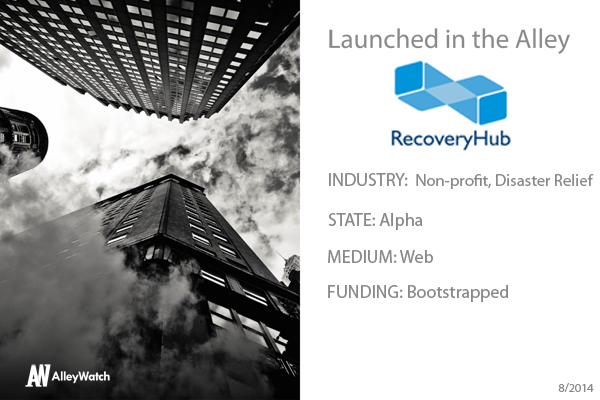Yes, we mean natural disasters. There are hundreds of them each year, hundreds of thousands of people are affected, and millions of dollars are donated. And still there are people who were affected by Hurricane Sandy, for example, who are still not back in their homes.
RecoveryHub is the first and only platform that will bring together donors, relief agencies and survivors with the tools necessary to get help where it’s needed to the people who need it most. And instead of just hitting the ‘donate’ button, donors can choose where and to whom they want to send the help.
By helping communities and humanitarian organizations direct relief and recovery efforts, RecoveryHub is also helping to solve one of the biggest hurdles in disaster recovery: coordinating all of the relief groups and resources.
Founder Tyler Radford (SIPA’12) tells us how his team’s first-hand experiences and how they plan on dealing with the problems.
Tell us about the product..
RecoveryHub is the first and only platform that connects aid donors, relief agencies, and survivors after a disaster. The platform directly empowers both survivors and relief agencies with the tools and information needed to recover from disaster more quickly and effectively.
How is it different?
RecoveryHub revolutionizes the post-disaster giving experience by allowing donors to browse the wishlists of nonprofit aid organizations and buy needed items from their lists. Instead of donating $10 or $20 to large aid organizations, donors now have the option to choose projects, locations, and nonprofits that resonate with their own interests and beliefs. In addition to the Wishlists feature, RecoveryHub will soon launch a national online platform bringing together survivors, humanitarian workers, and aid donors to provide a trusted source of information, events, jobs, and recovery resources, post-disaster.
What market are you attacking and how big is it?
On average, there are over 100 federally-declared disasters in the US each year, with hundreds of thousands of people affected and hundreds of million dollars in donations. As an example, there were around $575mm in donations in total for Hurricane Sandy alone.
What inspired you to launch this venture?

After Sandy, survivors were often left facing immense challenges, including displacement, loss of family members, employment, housing, and personal belongings. Roadblocks to recovery were many, and navigating the complex web of available relief programs from government, insurance companies, relief agencies, and private donors presented a daunting task. Survivors found themselves wading through numerous documents or relying on word of mouth to find programs for which they might be eligible.
At the same time, the humanitarian agencies that set out to serve survivors were sometimes in the position of “re-inventing the wheel,” instead of being poised to access a repository of best practices and exchange information with teams at other disaster sites across the United States. Donors and survivors alike were frustrated by the manner and pace in which donated funds were spent.
Having worked in a number of post-disaster contexts nationally and internationally, including for the American Red Cross after Sandy, the founders of the RecoveryHub came together in 2013 with the goal of addressing these recovery gaps.
What is the business model?
Nonprofit organization. Free, crowdsourced content such as news, resources, events and training. Sources of revenue include Disaster Wishlists, which are free for organizations which raise under $1000 and low-cost over $1000.
What are the milestones that you plan to achieve within 6 months?
Launch in New York for ongoing Hurricane Sandy recovery work. National launch in 2015.
Tell us about your experience with the Columbia Startup Lab thus far and your decision to apply.
CSL has provided us with much-needed team working space, has enabled us to recruit two highly qualified interns, and is certainly providing opportunities to learn from other ventures sharing the space.
If you could be put in touch with one investor in the New York community who would it be and why?
Our ideal investor measures ROI not in terms of a percentage return on dollars but in terms of the number of lives improved through use of the RecoveryHub platform. When RecoveryHub launches nationally, it has the potential to positively impact hundreds of thousands of people per year at one of the most vulnerable and traumatic points in their lives.
Why are you launching your business in New York?
CSL is in New York, one of our co-founders is in New York, and more than 20,000 people whose homes still need repair/rebuild from Sandy are in New York. NYC is a perfect base for us to refine our platform before launching it in other post-disaster contexts.
Where’s the best place to eat at 1am in New York?
Definitely one of the many Halal carts aka “street meat” vendors.





